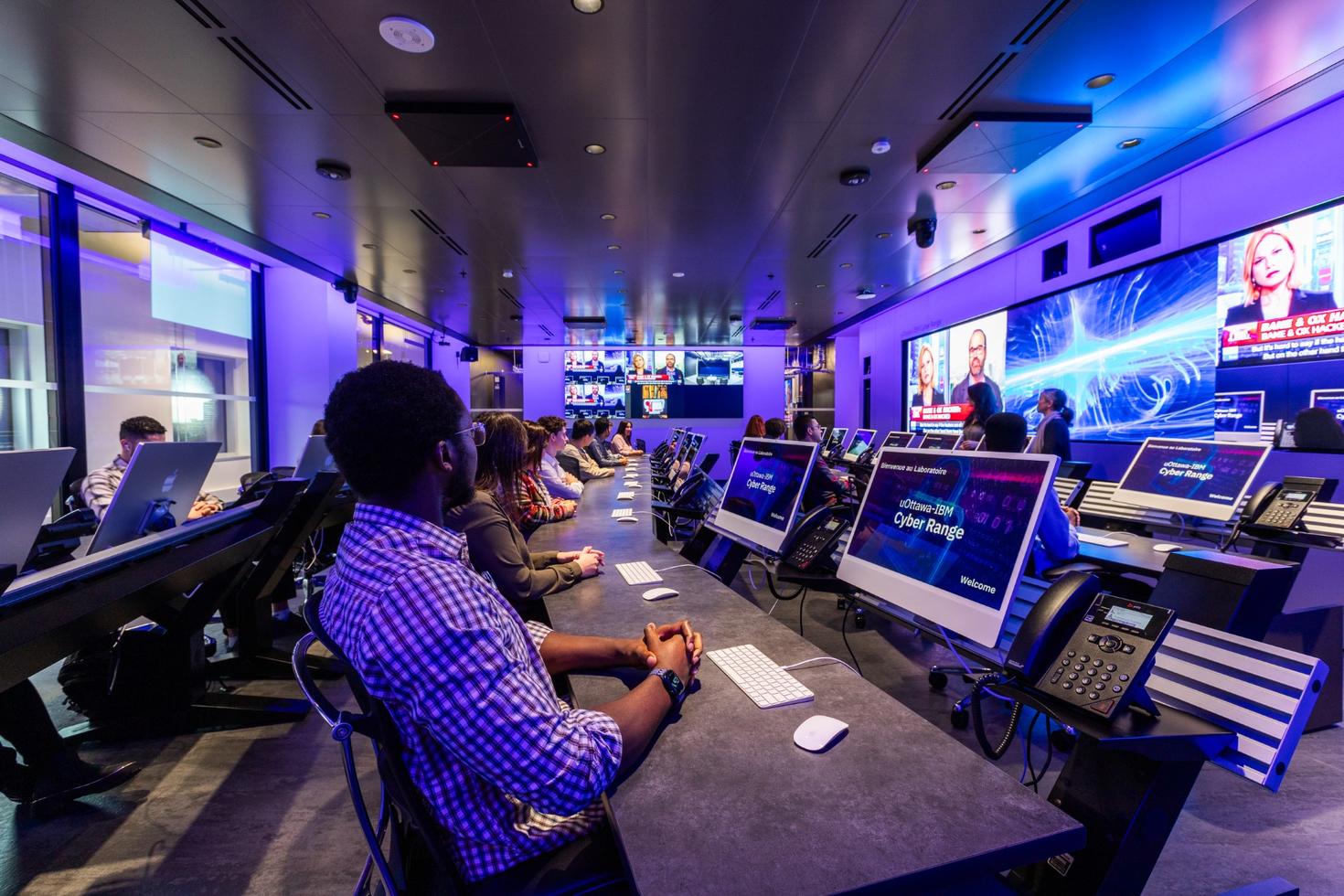In any year, more than 85% of Canadian companies are affected by successful cyberattacks, even though Canada ranks 13th out of 75 countries in level of cybersecurity. However, with the launch of the uOttawa-IBM Cyber Range, a new specialized facility dedicated to fighting cyberattacks, Co-director Guy-Vincent Jourdan hopes to see these stats improve soon.
Thanks to a unique partnership between IBM and the University of Ottawa, the Cyber Range is opening October 19. To mark the occasion, Jourdan sat down with us to discuss some of the key features of this one-of-a-kind facility.
Q1: What will the Cyber Range offer and how will it boost cybersecurity research in Canada?
GVJ: The uOttawa-IBM Cyber Range is a powerhouse for cybersecurity learning and research. Through sensory-immersive and interactive training simulations, we expose students and professionals to cutting-edge technology and real market expertise, so they can understand the theory, but also be ready for the real deal.
In addition to the unique gamified experience, the Cyber Range will also serve as a launchpad for ground-breaking cybersecurity and cybersafety research across multiple disciplines, tearing down those old-school silos. We’re bringing everyone to the same table, including tech, management, social sciences, ethics and law. It all fits into a holistic approach that will enable more effective and meaningful solutions.
Q2: Could you describe what the training simulations are like?
GVJ: The clock starts ticking as soon as participants step into the Cyber Range — a futuristic-looking room with rows of high-end computer workstations and a massive screen displaying real-time data (think NASA’s mission control). In those critical two hours, students are in the hot seat, grappling with a cyberattack simulation designed to challenge them and foster teamwork.
What sets this experience apart is the realistic chaos. It’s not just a pre-set scenario — it’s a fully interactive experience with its share of confusion, misunderstandings and erroneous suggestions, just like in real life. The team will need to find its own way forward, seeking a sound solution that is wise, legal and ethical.
Once the simulation wraps up, our expert security team takes a close look at how the team performed. This helps participants develop a robust response process, by building on what they did well and filling in any identified gaps.
Some simulations take it up a notch: confronted with a PR crisis, the team would designate a company spokesperson to give a live TV interview in a true-to-life TV studio, located right here at the Cyber Range facility.
Q3: What are some of the current research projects at the Cyber Range and what impact might they have?
GVJ: One project involves teaming up with the Université de Montréal. Together, we’ll be bridging the gap between legal frameworks and cybersecurity practices. The goal is better, more ethical cybersecurity policies and regulations.
And we’re not doing this alone. Our friends at uOttawa’s Security Operations Centre will provide us with data that accurately reflects what’s happening on campus networks. This is a huge step up from “synthetic” data produced in labs. Real, organic data will support better research while increasing its credibility and impact.
We’re also working on machine learning-based language models. Think a well-trained cybersecurity AI agent that communicates with other potentially harmful machines to prevent cyberthreats. This would be a significant boost to our cybersecurity defence.
Q4: What benefits will the Cyber Range bring to Canada and the global cybersecurity landscape?
GVJ: The uOttawa-IBM Cyber Range is all about building rock-solid cybersecurity systems and ramping up public awareness. We’re talking about protecting critical infrastructure and offering world-class human-centric cybersecurity training across government and the private sector.
But that’s not all. With a shortage of skilled cybersecurity professionals, another one of our key objectives is to tackle the workforce gap. It’s a win-win for Canada’s economy and businesses.
We will also be leveraging our local experience to foster stronger international collaboration. Our partnership with IBM will be a major asset here, helping us put Canada on the map as a global cybersecurity player.
Q5: Why did IBM choose to partner with uOttawa on the Cyber Range? What unique contributions does the University offer?
GVJ: IBM and uOttawa, it’s a match made of a long history of trust and mutual benefit. Over a decade of successful research together, the relationship has only grown stronger. For us at uOttawa, we’re all in when it comes to advancing cybersecurity, and our friends at IBM have seen it first hand.
Besides, let’s not forget our privileged position in the heart of the nation’s capital. It’s the place to be for government action. And being the world’s largest bilingual university only makes things more convenient for our partner’s work with the government and other French-speaking stakeholders. So, it’s not just tech — it’s a partnership that checks many boxes.

